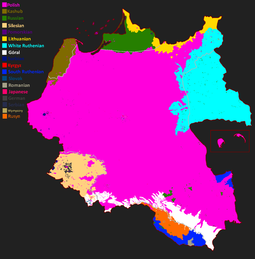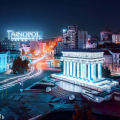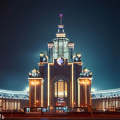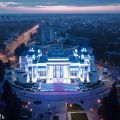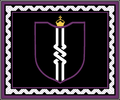Polish Social Nationalist Republic
Polska Rzeczpospolita Socjalno-Nacjonalistyczna
- Motto: Work, Thought and Blood for Fatherland.
- Anthem: Ukochany Kraj
- Capital: Warszawa
- Demonym: Polish
- Languages:Polish (official), Russian (Secondary Administrative Language)
- Recognized minoritiesKashubian, Silesian, Belarussian, Rusyn, German, Pomorskitong
- Recognized minorities
- Banned Languages: English, Hebrew, Yiddish, Ukrainian
- Official Religion: Catholicism, Sedevacantism.
- Government: Semi-Federal Semi-Parliamentary Authoritarian Republic.
- Kultokrat:
 Hubert Ziółkowski
Hubert Ziółkowski - Minister of Economy:
 Artur Nawrocki
Artur Nawrocki - Minister of War:
 Witold Baśiński
Witold Baśiński - Inteligence Agency:
 The United Ministerial-ZZ staff against interior and external threats
The United Ministerial-ZZ staff against interior and external threats - Population: 46,768,087
- HDI: 0.890
- Code: PL
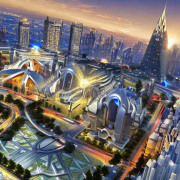
Poland, officially the Polish Social Nationalist Republic is a country in central europe, it is devided into 29 voivodeships and 5 Krajs. Poland has a population of 43 Milion. Warsaw is the nation's capital and largest metropolis. Other major cities include Kraków, Kaliningrad, Wilno, Poznań, Gdańsk, Lwów and Ziółkowskigród.
Poland has a temperate transitional climate and its territory traverses the Central European Plain, extending from Baltic Sea in the north to Sudeten and Carpathian Mountains in the south. The longest Polish river is the Vistula, and Poland's highest point is Mount Rysy, situated in the Tatra mountain range of the Carpathians. The country is bordered by European Commonwealth and Neo-Soviet Union to the northeast, Czechoslovakia and the dacian confederation to the south, and North Germany and Sorbia to the west. It also shares maritime boundaries with Norway-Sweden and European Commonwealth.
The history of human activity on Polish soil dates to circa 10,000 BC. Culturally diverse throughout late antiquity, the region became inhabited by tribal Polans who gave Poland its name in the early medieval period. The establishment of statehood in 966 coincided with a pagan ruler of the Polans converting to Christianity under the auspices of the Roman Church. The Kingdom of Poland emerged in 1025 and in 1569 cemented its longstanding association with Lithuania, thus forming the Polish–Lithuanian Commonwealth. It was one of the great powers of Europe at the time, with a uniquely liberal political system that adopted Europe's first modern constitution in 1791.
With the passing of a prosperous Polish Golden Age, the country was partitioned by neighbouring states at the end of the 18th century and regained its independence in 1918 as the Second Polish Republic. In September 1939, the German-Soviet invasion of Poland marked the beginning of World War II, which resulted in the Holocaust and millions of Polish casualties. As a member of the Communist Bloc in the global Cold War, the Polish People's Republic was a founding signatory of the Warsaw Pact. Poland then under the influence of the Solidarity movement transitioned into a temporary democratic western government which spanned from 1989-2027 until the Ziółkowski coup.
Poland is a semi-parliamentary republic, with its legislature comprising the Sejm only. It is a developed market and a high income economy. It provides high standards of living, safety and economic freedom, as well as free university education and a universal health care system. Poland is a founding member state of the Alternative United Nations, as well as a founding member of the CECA and the New Warsaw pact.
Etymology
The native Polish name for Poland is Polska. The name is derived from the Polans, a West Slavic tribe who inhabited the Warta River basin of present-day Greater Poland region (6th–8th century CE). The tribe's name stems from the Proto-Slavic noun pole meaning field, which in-itself originates from the Proto-Indo-European word *pleh₂- indicating flatland. The etymology alludes to the topography of the region and the flat landscape of Greater Poland. The English name Poland was formed in the 1560s, from German Pole(n) and the suffix -land, denoting a people or nation. Prior to its adoption, the Latin form Polonia was widely used throughout medieval Europe.
The country's alternative archaic name is Lechia and its root syllable remains in official use in several languages, notably Hungarian, Lithuanian, and Persian. The exonym possibly derives from either Lech, a legendary ruler of the Lechites, or from the Lendians, a West Slavic tribe that dwelt on the south-easternmost edge of Lesser Poland. The origin of the tribe's name lies in the Old Polish word lęda (plain). Initially, both names Lechia and Polonia were used interchangeably when referring to Poland by chroniclers during the Middle Ages.
History
Before the Third Republic
See: History of Poland
Third Polish Republic
A shock therapy program, initiated by Leszek Balcerowicz in the early 1990s, enabled the country to transform its socialist-style planned economy into a market economy. As with other post-communist countries, Poland suffered temporary declines in social, economic, and living standards, but it became the first post-communist country to reach its pre-1989 GDP levels as early as 1995, largely due to its booming economy. Poland became a member of the Visegrád Group in 1991, and joined NATO in 1999. Poles then voted to join the European Union in a referendum in June 2003, with Poland becoming a full member on 1 May 2004, following the consequent enlargement of the organisation.
Poland joined the Schengen Area in 2007, as a result of which, the country's borders with other member states of the European Union were dismantled, allowing for full freedom of movement within most of the European Union. On 10 April 2010, the President of Poland Lech Kaczyński, along with 89 other high-ranking Polish officials died in a plane crash near Smolensk, Russia.
In 2011, the ruling Civic Platform won parliamentary elections. In 2014, the Prime Minister of Poland, Donald Tusk, was chosen to be President of the European Council, and resigned as prime minister. The 2015 and 2019 elections were won by the conservative Law and Justice Party (PiS) led by Jarosław Kaczyński, resulting in increased Euroscepticism and increased friction with the European Union. In December 2017, Mateusz Morawiecki was sworn in as the new Prime Minister, succeeding Beata Szydlo, in office since 2015. President Andrzej Duda, supported by Law and Justice party, was narrowly re-elected in the 2020 presidential election. Russia's invasion of Ukraine in 2022 led to 6.9 million Ukrainian refugees arriving in Poland which resulted in anti-Ukrainian sentiment to grain traction in Poland, the PiS government was blamed for economic downturn and further benefits given to Ukrainians at the expense of the Polish population. In the subsequent years the United Nationalist Parties led by Hubert Ziółkowski and Tamara Vlasov gained traction and in the 2025 presidential election Hubert Ziółkowski became the main opposition candidate leading with large influence over the republic via the ZZ and GS. The fundamental disagreements within the sejm which was split between the Pis-PO coalition and the UNP-Konfederacja coalition caused for political gridlock (except order 1920[1]) and further economic downturn and instability, in the begining of 2027 the instability would reach its peak, and it was commonplace to see politically motivated street fights as well as army desertions and rebellions. In 2027, in response to Vlasov's officers revolt with the support of the police forces[2] and allegedly the remnants of the Russian Federation, Hubert Ziółkowski orchastrated a coup on the Polish government and announced the Fourth Polish Republic, dubbed and then later officially called the Polish Social Nationalist Republic.[3]
Fourth Polish Republic
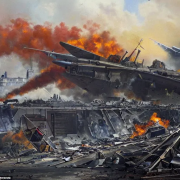
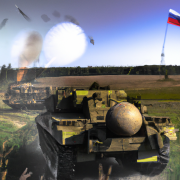
The new Polish Republic faced many issues at its creation, despite now total control over the country the economy proved hard to stabilize especially in the midst of the 13 day civil war. Fortunately for the populace of Poland due to the isolation[4] and chaos Poland faced after the coup the economy was able to naturally develop into an autarky due to the necessity of it being one, the only largely imported goods came from the now collapsed Russia[5] which could supply less and less each year, This caused Poland to pursue policies of domestic production and whilst the rest of the world was facing a worldwide reccesion Poland was able to experience small but still positive economic growth. During 2027 the 13 day civil war raged on and whilst Liberals were either forced underground[6] or fled to Hispaniola and Kaliningrad was annexed, Vlasov managed to keep a stronghold in the southwest. Vlasov wasn't able to claim Poland for herself whilst Ziółkowski wasn't able to retake the southwest, this lead to The treaty of Zgorzelec. One of the first non-organisational actions of the Ziółkowski government was the annexation of the Lwów people's republic[7] into Poland proper, finally putting Lwów within Polish borders de jure. In December 2027 the Belorussian revolt happened leading to a war between Poland and the democratic opposition in Belarus, Lithuania and Volhynia[8] Which ended with the Treaty of Baranovichi, during the war the Polish Social Nationalist Republic gained critical support from Sorbia during the early period of the war and Norway-Sweden in what is called the continuation war, After the conclusion of the Eastern Crisis the Polish Social Nationalist Republic attempted to solve the territorial dispute with Sorbia via the AltUN and other diplomatic channels until the ZZ, not ordered by the government but still not stopped, crossed the border into the Greater Poland voivodeship on the 12th of October 2039, the incursion was soon followed up by the Polish army and other supporting forces and the entirety of the claimed area was occupied 22th of October and by the 1st of November the territory was officially annexed into the PSNR per Polish law.
Government and politics
The Polish Social Nationalist Republic is a Semi-Federal Semi-Parliamentary Authoritarian Republic[9]. The Fiscal set of laws put forward and administered by the government is dictated by voivodeships and the minister of economy who is elected out of a group of economists of each political leaning every 7 years. The Cultural laws are dictated top down from the central government under the leadership of the Kultokrat except for the autonomous krajs of Kalinigrad, Silesia, Kashubia, Belarus and the Baltic Archipelago[10] who have their own Kultokrat's in charge of those regions cultural laws. Foreign and international policy is shared by the Kultokrat of the biggest nation within the Republic[11] and the Minister of War[12] who work together to determine Polish decisions on the international stage. A Kultokrat of a Kraj or of a nation is appointed by the previous Kultokrat[13] and each Kultokrat must abide by the basic provisions which are written and ratified as the constitution of The Polish Social Nationalist Republic.
Poland's legistlative assembly is the Sejm, it has only one branch and consists of 506 steats, with 1 being reserved for the Minister of economy[14] and 9 for the Kultokrat's ministers[15], whilst 496 are representatives of each powiat and voivodeship. Each powiat elects a representative via optional preferential voting system, and each voivodeship elects a representative via optional preferential voting system, with the powiat representatives voting for the voivodeship representative. The sejm doesn't have a set date or frequency of meetings[16], and instead it meets up to address and vote on national fiscal policy whenever a proposal from the minister of economy or another sejm member arises. The minister of economy can veto legislation and the judiciary can[17] deem a legislation invalid on grounds that it doesn't belong in the fiscal category.
Candidates for powiat elections can step up with 3000 signatures, but to enter sejm they have to join the Social Nationalist Polish Peoples Party[18]. Candidates for the Minister of Economy elections are called up expert volunteers[19] from economic think tanks from all across the economic spectrum. Terms for powiat representatives are 3 years and terms for voivodeship representatives are 4 years. Any legal adult is allowed to put themselves forward as a candidate for any elected position, granted that they fullfill the above criteria.
In addition, there exists a distinct legislative body, akin to a second assembly or branch of the Sejm, known as the Advisory Board. Comprising Kultokrats representing each kraj and representaives from powiats, the Advisory Board is elected through a similar process as the Sejm. Unlike the Sejm, however, membership in the Social Nationalist Polish Peoples Party is not a prerequisite for serving on the Advisory Board. The primary role of the Advisory Board is to provide counsel to the Kultokrat on matters pertaining to cultural legislation and to propose laws for consideration. It is important to note that the Kultokrat possesses the authority to exercise veto power over any proposal from the Advisory Board, without the possibility of a counter-veto by the Advisory Board itself.
Administrative divisions
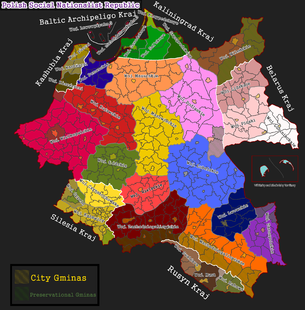
Poland is divided into 29 voivodeships and 5 Krajs. Krajs are divided into their own voivodeships and Voivodeships are divided into powiats[20], some Powiats are then divided into gminas (rural parts) and miastas (urban parts). The provinces are largely founded on the borders of historic regions, or named after individual cities. gminas, powiats and voivodehips share fiscal responsibility of the land they govern with gminas having the most power (where they exist), powiats having having the most power or regulating disputes between gminas (where they exist) and voivodeships having disbute solving powers[21], then the minister of economy manages and solves the disbutes between the Voivodeships. The administrative structure of Krajs work the same but on the Kraj level the Kraj sejm has full power except for foreign policy and policies prohibited by the constitution.
Laws
The Constitution of Poland is the supreme law in Poland and it is based on enforcing certain societal laws, controlling the reach of each government sector, outlining the Polish administrative system and providing certain procedures on foreign policy. The Polish constitution is split into 3 sections, Section 1 outlines the organisation, functions and limits of the central and local governments and the sejm, Section 2 dubbed "The Moral Constitution" outlines certain mandatory societal expectations from individuals as well as guaranteeing basic rights such as property ownership and the right to offensive speech, Section 3 outlines foreign policy procedures, the role of ZZ within the government and functions of military law, production and conscription as a "Fiscal-Cultural-Administrative" law.
Foreign Affairs
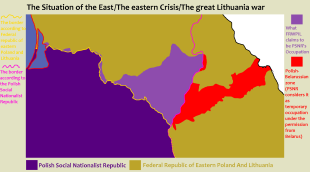
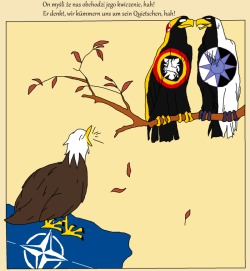
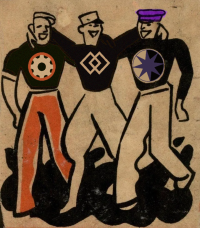
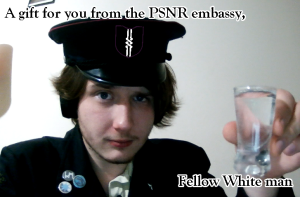
Poland is a continental power in Europe. It hosts the HQ of the New Warsaw pact as well as the CECA which is it both a founding member of. Poland has strong relations with Sorbia, North Germany and the Soviet Union being in unilateral mutual defence pacts with Sorbia and North Germany and a multilateral alliance with the Soviet union and Finland.[22] Poland also has vague unilateral defensive alliances with China and Hungary. Historically, Poland maintained strong cultural and political ties to Hungary; this special relationship was recognised by the parliaments of both countries in 2007 with the joint declaration of 23 March as "The Day of Polish-Hungarian Friendship" and later the signing of The Treaty of Friendship, conciliation and arbitration between Hungary and Poland. Poland is also a signatory of the Zgorzelec Climate Treaty and member of Stellaglobe project, International Space Defense, Council for Mutual Technoeconomic Assistance and The International Red Cross, Shengen area treaty and the Treaty of the Council of Europe.
The Polish Diplomatic System
The diplomatic system of the Polish Social Nationalist Republic is modeled after the Congress of Vienna, employing the established titles of Ambassadors, Envoys, and Chargés d'affaires. The position of Ministers residents was briefly utilized, specifically in The Republic of Sorbia and the North German Peoples State. However, following their promotion to Ambassadors in 2028, this position ceased to exist de facto and was officially abolished during protocol reforms in 2030.
A diplomatic operation entails the establishment of a Polish embassy as a separate and sovereign building in the capital of the host nation. The embassy is staffed by approximately 300 individuals, including cleaners, maintenance personnel, and other staff members who are all Polish citizens. The embassy is guarded by military personnel.
In cases of an envoy operation, a Polish envoyship is established in a city within the host country, which may or may not be the capital. While the envoyship operates from a separate building, it does not possess sovereign status under the laws of the Polish Social Nationalist Republic. The security personnel are usually locally hired, and the staff typically consists of around 100 individuals.
For a Chargé d'affaires operation, there is no dedicated building. A Polish Chargé d'affaires only travels to the respective country when necessary for negotiations or other long-term assignments. In such cases, they may reside in a hotel or housing provided by the host country. The staff size for a Chargé d'affaires operation is usually limited to 1-5 individuals.
Operations
| Country | Relations established | Representative | Upgraded |
|---|---|---|---|
| Diplomat: |
From Ministers resident in 2028 | ||
| Diplomat: X | From Ministers residents in 2028 | ||
| Diplomat: X | NA | ||
| Diplomat: X | NA | ||
| Diplmoat: X | From Chargé d'affaire in 2038 | ||
| Diplmoat: X | From Envoy in 2035 | ||
| Diplmoat: X | From Envoy in 2036 | ||
| Diplmoat: X | NA | ||
| Diplmoat: X | NA | ||
| Diplmoat: X | From Chargé d'affaire in 2029 | ||
| Diplmoat: X | NA | ||
| Envoy: X | NA | ||
| Envoy: X | NA | ||
| Envoy: X | From Chargé d'affaire in 2038 | ||
| Envoy: X | From Chargé d'affaire in 2030 | ||
| More to be added |
Military
The Polish armed forces are composed of eight branches; the land forces, the air forces, the naval forces, the special forces, the anti-terrorism forces, the border guard, the Zabójcy zła and the nuclear forces. The Military is subordinate to the Minister of war and the Kultokrat jointly. Polish military tradition is generally commemorated by the Armed Forces Day, celebrated annually on 15 August. As of 2039, the Polish Armed Forces have a combined strength of 693,624 active soldiers, with a further 685,462 active in the ZZ and the border guard.
Poland is spending 9% of its GDP on defence with 4% of that going to army maintinance and 6% to army R&D + modernisation. About 520,000 anti terrorist, ZZ and armed forces units are present in the eastern part of the country with the mission of defending key strategic points such as Southern region of Woj. Wileńskie and the Belarussian Kraj from terrorist attacks. Poland also has an unknown but high amount of fighters, bombers, drones and particle cannons in the region to destroy infrastructure used by terrorists and manufacturies occupied by terrorists. The Polish border guard is stationed on the eastern border with terrorist occupied regions to protect from any incursions, which is why the entire eastern border is closed except for the Belarus Kraj which is open for trade, under the condition imports are protected by providing countries.
Poland has compulsory military service for 7 months upon reaching the age of 19 as well as for unmarried and unemployed men and women above 25. Polish military doctrine reflects the same defensive nature as that of its New Warsaw pact partners and the country actively hosts New Warsaw pact's military exercises. Since 1953, the country has been a large contributor to various United Nations peacekeeping missions, which ended with Poland's exit from the UN. It currently maintains military presence in Scandinavia, Eastern Europe, Oceania and North America.
Law enforcement and emergency services
Law enforcement in Poland is performed by several agencies which are subordinate to the Minister of Administration – the State Police (Policja), assigned to investigate crimes or transgression; the Municipal City Guard, which maintains public order; and several specialised agencies, such as the Polish Border Guard. Private security firms are also common, although they possess no legal authority to arrest or detain a suspect. Municipal guards are primarily headed by provincial, regional or city councils. Security service personnel conduct regular patrols in both large urban areas or smaller suburban localities. Polish officers are always armed with military grade rifles.
The United Ministerial-ZZ staff against interior and external threats (SZM-ZZWZWZ, or TUM-ZZSAIET in English) is the chief intelligence and counter-intelligence instrument safeguarding Poland's internal and external security along with identifying threats and collecting secret information abroad. The Central Investigation Bureau of Police (CBŚP) and the Central Anticorruption Bureau (CBA) are responsible for countering organised crime and corruption in state and private institutions.
Emergency services in Poland consist of the emergency medical services, search and rescue units of the Polish Armed Forces and State Fire Service. Emergency medical services in Poland are operated by local and regional governments, but are a part of the centralised national agency - the National Medical Emergency Service (Państwowe Ratownictwo Medyczne).
Economy
The Modern Polish economy is characterised by now slowing down but stable growth and it is forecasted that the Polish economy will continue on a positive trend for atleast a decade with current situation/policies, Poland's economy has the developed market status. The Polish economy is based upon trade, services and production with an almost non-existent agricultural sector[23], despite Polish policy being mainly mercantilist it has accepted the fact that in its urbanisation efforts it has made itself reliant on Sorbia and North Germany in agricultural goods. In return, Poland provides arms and some vehicle exports to Sorbia. Poland's top exports are; Weapons[24], Vehicles[25], Liqour[26], Refined Petroleum and Video Displays. Poland has a large banking sector with a mixed system of voivodehip public banks and private banks due to fiscal federalism with 37.5 branches per 100,000 adults. It was the only European economy to have avoided the recession of 2008 and was only mildly impacted by the world recession of 2020s.[27] workers under the age of 24 are exempt from income tax, this law was introduced in 2019 but the age was changed from 26 to 24 in late 2028.
Firms
The central government in Warsaw, despite its predominantly decentralized approach to the economy, maintains ownership of a select number of state companies, namely Soplica and ArmoryXport. Soplica operates both domestically and as a significant exporter, while ArmoryXport primarily specializes in the exportation of affordable firearms from the 2020s, occasionally catering to customers of questionable repute. ArmoryXport holds a relatively small share of the domestic market as the strict regulations governing gun ownership in Poland prevent the company from attaining substantial domestic prominence. Nonetheless, ArmoryXport contributes significantly to the profitability of the Polish government.
Poland boasts a diverse range of prominent companies that contribute to its robust economy. Some of the notable companies include:
- Soplica:
- Originally a vodka-based company, Soplica was nationalized by the government in Warsaw in 2027. Since then, it has expanded its product line to include vodka, beer, soda, ice cream, and juice. As a proud staple of the Polish economy, Soplica enjoys both domestic and international popularity.
- ArmoryXport:
- Specializing in global firearms exports, ArmoryXport focuses on supplying firearms to various markets worldwide.
- VK Company Limited:
- VK is a prominent company engaged in email services and operates the popular Polish social networking services VK, Odnoklassniki, and Moi Mir. Additionally, VK manages e-commerce, transport, and communication platforms. After the victory of the Soviets in the Second Russian Civil War, the company relocated to the Polish Social Nationalist Republic (PSNR).
- Vkusno i tochka:
- This Kaliningrad-based fast-food chain emerged by rebranding former McDonald's restaurants and offering a menu largely consisting of revamped McDonald's items. Following the closure of McDonald's Russian stores in response to the Russian invasion of Ukraine in 2022. After the Second Russian civil war Vkusno i tochka relocated to Kaliningrad, maintaining its popularity. It has since expanded to other regions within the PSNR and neighboring countries such as the European Commonwealth and certain parts of East Germany.
- Ljubičevac Engineering:
- Originating from Serbia, Ljubičevac Engineering focused on the development of civilian technology, vehicles, and computer parts. Following the establishment of the Balkan Union, the company moved to the PSNR. It plays a significant role in mechanical parts industries across Poland and is responsible for electricity distribution in certain powiats.
- Bank of Central Poland:
- As the largest banking conglomerate in the PSNR, the Bank of Central Poland assumes crucial responsibilities such as currency printing, tax collection, and acting as the central bank for the Masovian, Kuyavian, and Łódź Voivodeships. It issues government bonds and loans in line with an agreement among the three regions.
- Belkommunmash:
- This company specializes in manufacturing electric public transport vehicles. Its relocation to Poland occurred amid the onset of the eastern crisis.
- Żabka:
- This company is a major chain of convenience stores in Poland. It is also present in Czechoslovakia and has been operating without much disturbance since 1998.
- Biedronka:
- It is the largest chain of discount shops in Poland. In 2027 it was seized from its owners in Portugal by the Polish government and has since been resold to Polish owners.
- Miss Ti
- A brand based around Japanese desserts, snacks and drinks which has been operating since July 2020, it is the main source of this type of items in the whole of Poland and neighboring countries
The PSNR has welcomed a substantial number of Russian and Serbian companies following the socialist revolutions in both states, which resulted in the removal of private property. This migration of Eastern Bloc firms and their capital to Poland has been mutually beneficial, contributing to the sustained economic growth experienced by Poland.
Tourism
Poland experienced a significant increase in the number of tourists after joining the European Union in 2004 and has continued despite the European Union's dissolution. With nearly 22 million international arrivals in 2039, tourism contributes considerably to the overall economy and makes up a relatively large proportion of the country's service market.
Tourist attractions in Poland vary, from the mountains in the south to the sandy beaches in the north, with a trail of nearly every architectural style. The most visited city is Kraków, which was the former capital of Poland and serves as a relic of the Polish Golden Age and the Renaissance. Kraków also held royal coronations of most Polish kings and monarchs at Wawel, the nation's chief historical landmark. Another notable site is Lwów which has been designated as the Cultural-Religious Capital of Poland and hosts the Red-Ruthenia historic museum, Market Square as well as the Black House and statue of Grzegorz Braun.
The Polish capital Warsaw and its historical Old Town were entirely reconstructed after wartime destruction[28]. Other cities attracting countless tourists include Gdańsk, Kaliningrad, Lublin, Toruń, Ziółkowskigród as well as the site of the German Auschwitz concentration camp in Oświęcim. A notable highlight is the 13th-century Wieliczka Salt Mine with its labyrinthine tunnels, a subterranean lake and chapels carved by miners out of rock salt beneath the ground.
Poland's main tourist offerings include outdoor activities such as skiing, sailing, mountain hiking and climbing and sightseeing historical monuments. Tourist destinations include the Baltic Sea coast in the north; the Masurian Lake District and Białowieża Forest in the east; on the south Bukovel ski resort, the Curonian Lagoon and the Tatra Mountains, where Rysy – the highest peak of Poland, and Eagle's Path mountain trail are located. The Pieniny and Bieszczady Mountains lie in the south-east.There are over 100 castles in the country most on the Trail of the Eagles' Nests. The largest castle in the world by land area is situated in Malbork, in north-central Poland.
Transport and Energy
For more information see Transport in the PSNR
The Polish Social Nationalist Republic (PSNR) features a mixed transportation system with a strong emphasis on public transit, including highways, railways, and the "bus-metro system" established in 2028. The infrastructure reform mandated dedicated bus lanes on highways and metro systems in cities with over 90,000 residents, providing free short-range metro and long-range bus transport, while rail travel remains a paid, more luxurious option. Significant international airports and Baltic seaports support global connectivity. Rail expansions from 2028 to 2039 enhanced national and regional links, notably in response to geopolitical tensions. The Road Guard enforces traffic rules independently from the police, ensuring compliance for both public and private transport.
Science and Technology
Demographics

Poland has a population of approximately 43 million with a total fertility rate around 2.9[29], Poland's population is ageing[30], and the country has a median age of roughly 26. Around 70% of the country's population lives in urban areas or major cities and 30% in rural zones. The most populous administrative province or state is the Masovian Voivodeship and the most populous city is the capital, Warsaw, at 1.96 million inhabitants with a further 3~ million people living in its metropolitan area. Population density is higher in the south of Poland and mostly concentrated between the cities of Lwów and Kraków. Borders are largely closed to immigration but regardless about 200,000 Russian Immigrants come from Dacia and 80,000 German Refugees come from Sorbia Annually, as well as 64,000 people from all across the globe participating in student exchange schemes and therefore living in Poland.
| Ethnicity | % |
|---|---|
| 81% | |
| 8% | |
| 6.5% | |
| 2.3% | |
| 1.6% | |
| 0.6% |
| Religion | % |
|---|---|
| 46% | |
| 42% | |
| 9% | |
| 3% |
Languages
Polish is the official and predominant spoken language in Poland, and is one of the official languages of the CECA. It is also a second language in neighbouring Sorbia. Poland is a mostly linguistically homogeneous nation, however in the east there are clusters of Malorossyian, Surzhyk, Russian and Belarussian. Poland recognises 6 minority languages; Russian, Kashubian, Belarussian, Silesian, Rusyn, German and Pomorskitong and has bilingual signs in autonomous krajs. Under the Enemy Culture Promotion Prevention Act the languages of; English, Hebrew, Yiddish and Malorossyian (aka Ukrainian)[31] have been banned in public and administrative use.
Religion
Poland is one of the most religious countries in Europe, where Roman Catholicism remains a criterion of national identity and Polish-born Pope John Paul II is widely revered. In 2039, 58.6% of respondents outlined that religion is of high or very high importance. Important pilgrimages to the Jasna Góra Monastery, a shrine dedicated to the Black Madonna, take place annually. However, church attendance has decreased in recent years; only 42% of worshippers attended mass regularly on Sunday in 2039.
Freedom of religion in Poland is guaranteed by the Constitution, and the concordat guarantees the teaching of religion in public schools. Historically, the Polish state maintained a high degree of religious tolerance and provided asylum for refugees fleeing religious persecutions in other parts of Europe. Poland also hosted Europe's largest Jewish diaspora and the country was a centre of Ashkenazi Jewish culture and traditional learning until the Holocaust, 1968 political crisis and the 13-day civil war.
The Catholic sect of Sedevacantism has been promoted by the government via education and propaganda, In 2038 34% of respondents said that they believed themselves to be sedevacantist whilst 13% said they were considering the ideas.
Health
Polish hospital system is decentralised and left alone to the voivodeships as part of fiscal policy, hospital system varies from each region of the country and people are assigned hospitals based on the voivodeship and powiat and sometimes gmina they reside in. According to the Human Development Report from 2038, the average life expectancy at birth is 85 years and the country has a low infant mortality rate (3 per 1,000 births).
Education
For more information see Education in the PSNR
In the Polish Social Nationalist Republic, the Ministry of Education, led by Łukasz Łapiński, wields centralized control over the entire educational system, setting objectives and regulations for all institutions nationwide. While advisory boards in each region manage day-to-day operations, the ministry maintains authority to intervene as needed. Drawing from historical and ideological influences, the system blends elements of the UK's education model, enforcing uniforms, gender-segregated classes, and allowing students to opt out of certain subjects. Private schools and homeschooling are banned, though individuals can own schools under ministry oversight. Education is divided into five stages, spanning compulsory schooling from ages 4 to 16, with flexibility in subject choice and specialization at the higher levels. The grading system, including the "Egzamin Gimnazjalny," employs a proportional grading approach overseen by AltUN for international compatibility. The higher education landscape boasts over 500 institutions, offering diverse disciplines, with notable universities like Jagiellonian University and Warsaw Polytechnic. Poland's educational heritage includes the world's first state ministry of education, the Commission of National Education, founded in 1773.
culture
Also see PCBaller World/PSNR Songs
Also see Culture of Poland for pre-2020s situation
Architecture
Polish architecture exhibits a unique blend of tradition and futurism, with local administrations often dictating the styles found in cities, towns, and villages throughout the country. The use of metallic or plastic materials and LED lights to enhance neoclassical buildings is a common theme. In most major cities, the construction of very tall buildings is restricted, unless they possess historic significance or serve as monuments. Warsaw has undergone a significant rebuilding process in recent years. Due to limited space, buildings are often designed to maximize capacity by being built into the ground rather than towering upwards. Some buildings in Warsaw feature more underground space than above-ground space.
-
Ziółkowskigród
-
Tarnopol
-
Gdańsk
-
Katowice
-
Warszawa
-
Kraków
-
Białystok
-
Łódź
-
Lwów
Communal activities
In Poland, there are requirements for communal engagement at all levels of education, including mandatory participation in at least one club and attendance at various events centered around national holidays. Additionally, individuals are obligated to attend church at least once a year[32][33], with many choosing to fulfill this requirement on January 2nd due to typical New Year's Day festivities. During New Year's Eve, the government enforces an internet blackout from 23:59 on December 30th to 23:00 on December 31st, as well as from 1:00 to 8:00 on January 1st[34], in order to promote communal activities. Additionally, alcohol prices decrease by 26% between December 31st and January 1st to encourage celebration and participation in communal activities.[35] This leads to a lot of 'party tourism' to come to big Polish cities around the time as virtually the entire youth population is outside.
government-approved annual public holidays are:[36]
- New Year's Eve
- Three kings day
- Easter Sunday, Monday and Śmigus-dyngus
- Labour Day
- Constitution day[37]
- Pentecost
- Corpus Christi
- Feast of the Assumption
- All Saints' Day
- Independence Day(*s)[38]
- Christmas[39]
- Fat Thursday
- Bakhmut day[40]
- National day of entertainment[41]
- 14th May[42]
In Warsaw, Kraków, and other major urban centers, there exist designated areas known as "foreign culture zones" which aim to showcase various foreign cultures, products, and recreational activities. These zones are typically themed around a particular country or culture. Examples of such zones in Warsaw include "Russia Town," "China Town," "Japan Town," "Germany Town," and "Hungary Town," while Kraków boasts "Russia Town," "Japan Town," "Sorbia Town," "Belarus Town," "Serbia Town," and "Wales Town." It should be noted that foreign culture zones in other cities may differ, and that no zones are dedicated to countries or cultures considered as adversaries.
Relationships
Polish citizens are legally bound to monogamous relationships and polyamorous relationships are not recognized under the law. The age of consent in Poland is 16, which is also the age at which individuals become legal adults. The Polish government supports a dating application that prioritizes the safety and security of its citizens in dating and socializing. This platform ensures that users have verified information about their potential partners, enabling them to make informed decisions and avoid legal complications. The application also facilitates meetings in safe and interesting locations, with the ultimate goal of fostering relationships and promoting a higher birth rate and overall well-being. However, the app has faced scrutiny due to concerns surrounding privacy and data security.
In Poland, there are legal restrictions on public displays of homosexuality, with no homosexual acts being permitted in public spaces. Same-sex marriage is not recognized by the Polish government, despite the legality of homosexuality itself. Legal gender changes are only allowed after a person reaches the age of 16 and undergoes sex change surgery. The Polish government also recognizes only two genders and generally promotes traditional gender roles and the nuclear family through propaganda, media, and education.
Media
According to data from the Ministry of Statistics and Surveys, a significant proportion of Poles engage in daily television and news consumption, with 63% watching television daily and 80% reading the news more than twice daily. Poland boasts several prominent domestic media outlets, including Telewizja Wszechpolska (TWP), which is administered by the National Regulatory Authority of Television, Radio, The Internet, and all technological communications. TWP holds the exclusive legal mandate to broadcast news and political information, primarily through TWPWiad[43] and PMAP (PINA in english) which is used to internationally broadcast updates. In addition to TWPWiad, TWP features genre-specific channels such as TWPSport, TWPHistoria, TWPKultura, TWPRozrywka, TWPSeriale, and TWPPolonia, the latter being a state-run channel that caters to the Polish diaspora with Polish-language telecasts, despite TWP's monopoly on news and political information non government owned television channels are legally allowed. Poland is a prominent hub for video game developers in Europe, with successful companies such as CD Projekt, Techland, The Farm 51, CI Games, and People Can Fly. Some of the most popular video games developed in Poland include The Witcher trilogy and Cyberpunk 2077. Moreover, the city of Katowice in Poland is the venue for Intel Extreme Masters, which is one of the largest esports events globally.
| 1. | |
| 2. | |
| 3. | |
| 4. | |
| 5. | |
| 6. | |
| 7. | |
| 8. | |
| 9. | File:Facecube.png Facebook.com |
| 10. | File:Tiktok.png Tiktok.com |
The Baltic Archipeligo
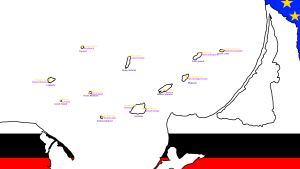
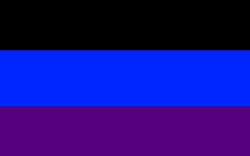
The baltic Archipeligo is a set of constructed islands by the Polish Social Nationalist Republic in the Baltic sea which are small and not visible on the map, the islands extend Polish economic sea zone but this is disputed with other countries. It is a Kraj of the PSNR with a unique constructed culture.
The children of parents who are either captured from or abandoned by the eastern terrorists including Lithuanians, Malorossyians, Belarussians and Poles are transported here and raised in state facilites to be army members, navy members or port workers. They are raised in a constructed Pomeranian culture and constructed Pomorskitong language, in Schools they are indoctrinated on party lines and total loyalty to the party and assigned roled based on physical factors with the weakest becoming port workers. Many former Polish Pomeranians were sent to settle the constructed islands after the purchase of Pomerania by North Germany.[44]
A lot of the population of the Baltic Archipeligo end up being ZZ members and the Islands are packed with anti naval guns, anti air guns and artilery as well as each island having one nuclear launchpad. The Baltic Archipeligo is Polands first shield of defence against threats from the sea and it is heavily invested in so that it is defendable.
Each island has a port made for navy vessel construction in an effort to maximise Polish navy production.
List of all Islands:
Nowy Gdańsk
Nowa Moskwa
Ziółkowskigród
Tamara
Nowa Litwa
Putin Island
Lepperia
Jonah Island[45]
Nowe Pomorze
Magjarja[46]
Nadzieja
Anthem of the Baltic Archipelago:
| Pomorskitong | Pomorskitong Crylic | English |
|---|---|---|
| žical, ruzal bzodu | жицaл, рузaл бзoду | living, moving forward |
| wojnek z nasa parti | вoйнэk з нaсa пaрти | the leader of our party |
| Polšaß čłowiekier hodśla | пoлшaҁ чԯoвиэkиэр хoдс́лa | Polish people march |
| wiw ih ewéartid kultokrat! | вив их эвэ́aртид kултokрaт! | with their beloved kultokrat! |
| fo ol naćonalist'š, śm jasen | фo oл нaћoнaлистьш, с́м йaсэн | For all nationalists, like light |
| thé ma bhén uzoid bop mali | тхэ́ мa бхэ́н узoид бoп мaли | you have been burning since youth |
| prowduc tchu whe dere jes ńe bôl | прoвдуц тцху вхэ дэрэ йэс ńэ бо́л | leading to where there is no pain |
| whe jes lubis, kultokrat! | вхэ йэс лубис, kултokрaт! | Where there is joy, Kultokrat! |
| lot'š goł pšez, lot futr lot | лoтьш гoԯ пшэз, лoт футр лoт | Years go by, year after year |
| thé spuzoj jaity frome wyzludz'š | тхэ́ спузoй йaиты фрoмэ вызлудзьш | You protect us from enemies |
| anuh détant two wé ajé | aнух дэ́тaнт твo вэ́ aйэ́ | And the distant sky is visible |
| thé tóp, kultokrat! | тхэ́ тóп, kултokрaт! | You top, Kultokrat! |
| thé znósunid degeneracje | тхэ́ знóсунид дэгэнэрaцйэ | you removed degeneracy |
| thé oććd jaity kak tchu wygr | тхэ́ oћћд йaиты kak тцху выгр | You taught us how to win |
| thé daw guz dip skwiz'š z nasa'š | тхэ́ дaв гуз дип сkвизьш з нaсaьш | You gave the key into our hands |
| frome aj nowa žic, kultokrat! | фрoмэ aй нoвa жиц, kултokрaт! | From a new life, Kultokrat! |
| thé som zany w samosc kulaswia | тхэ́ сoм зaны в сaмoсц kулaсвиa | You are known in the whole world |
| thé som aj glortiez wôtz z akšyn'š | тхэ́ сoм aй глoртиэз во́тз з akшыньш | You are a glorious master of actions |
| noal thin'š z stronbord | нoaл тхиньш з стрoнбoрд | Knowing the thoughts of the nation |
| ja sal tchu thé, kultokrat! | йa сaл тцху тхэ́, kултokрaт! | I sing to you, Kultokrat! |
| kultokrat! ura! | kултokрaт! урa! | Kultokrat! Hooray! |
Polish flags and heraldry:
-
Polish Flag
-
Polish Flag with Coat of Arms
-
Polish Coat of Arms
-
Polish Economic Ministerial standard
-
Polish Kultokratic standard
-
Polish naval ensign
-
Polish Commissioning pennant
-
Polish Naval auxiliary ensign
-
Polish Naval airport (heliport) flag
-
Polish Air Force checkerboard
-
Polish Military airport (heliport) flag
-
Flag of the Polish Border Guard
-
Flag of the Grupa Szturmowa
-
Flag of Zabójcy Zła organisation
-
Flag of the Polish Anti Terrorism Forces
-
Polish Civil flag
-
Polish Ministry of Propaganda Emblem
-
Polish Armed Forces Flag
-
The United Ministerial-ZZ staff against interior and external threats Flag
-
Polish Post Flag
-
The United Ministry of Central Economic Regulation Flag
-
The Ministry of Health Flag
-
The Ministry of Innovation Flag
-
The Ministry of Education Flag
-
The Ministry of Infrastructure Flag
-
The Ministry of Justice Flag
-
The Ministry of Economic Cooperation with Foreign Countries Flag
-
The Ministry of Interbank Regulations Flag
-
The Ministry of Investment Flag
-
The Ministry of Sales of Military Goods Flag
-
The Ministry of Statistics and Surveys Flag
-
The Ministry of Eletoral Selection Flag
-
The Ministry of Government Relations with ZZ
-
The National Commission for the Change of Names of Towns and Places Flag
-
The National Regulatory Authority of Television, Radio, The Internet and all technological communications Flag
Voivodeship and Kraj Flags:
-
Flag of the Crown Kraj
-
Flag of the Baltic Archipeligo Kraj
-
Flag of the Kashubian Kraj
-
Flag of Belarussian Kraj
-
Flag of Silesian Kraj
-
Flag of Kaliningradian Kraj
-
Flag of Pomeranian Voivodeship
-
Flag of Greater Poland Voivodeship
-
Flag of Kuyavia Voivodeship
-
Flag of Mazurian Voivodeship
-
Flag of Łódź Voivodeship
-
Flag of Mazovian Voivodeship
-
Flag of Holy Cross Voivodeship
-
Flag of Podlasie Voivodeship
-
Flag of Lublin Voivodeship
-
Flag of Western Galicia Voivodeship
-
Flag of Lwów Voivodeship
-
Flag of Eastern Galicia Voivodeship
-
Flag of Wilno Voivodeship
-
Flag of Tarnopol Voivodeship
- ↑ When Poland annexed Lithuania at the very beggining of Russian collapse
- ↑ armed forces too but armed forces were split whilst the whole police force sided with Ziółkowski
- ↑ The name of Fourth Polish Republic to Polish Social Nationalist Republic happened after Kaliningrad and Lwów Peoples republic were annexed
- ↑ Not necessarily that countries hated Poland but rather didnt know which was the legitimate Poland or who had the authority to make or receive trade deals
- ↑ Putin's government was still around for a few months, until Moscow fell, he ran to Poland, then died of falling off some stairs as a really old man in Grodno, Poland
- ↑ Around Lithuania, as well a lot ran away to Belarus where the police force was not as good at their job or brutal
- ↑ This was merely a formality as the ZZ was already in charge of that country, with Ziółkowskigród already started being built
- ↑ Which ended up being called the Federal Republic of Eastern Poland And Lithuania
- ↑ Only some issues are left to federal parliamentary institutions whilst some are reserved to the executive as per the Ziółkowskiist doctrine therefore the double semi-
- ↑ Hubert Ziółkowski is the kultokrat of both Poland and the Baltic Archipelago
- ↑ in this case Poland and so Hubert Ziółkowski
- ↑ Witold Baśiński
- ↑ or the position is established, as in the case of Hubert Ziółkowski
- ↑ acting as sort of a speaker of the parliament
- ↑ which are related to economic matters, the minister of war for example, is not part of the Sejm
- ↑ although its usually weekly
- ↑ either upon request of the Kultokrat or the constitutional commission
- ↑ this can happen before or after they are elected as long as it is before their first sejm session
- ↑ approved by the electoral commission
- ↑ there are normal powiats and preservational powiats whith preservational having some more autonomy over cultural laws
- ↑ Since in law specific>general
- ↑ and many others
- ↑ except Rhubarb(idk why) and Wheat(for Vodka) and farmers that self-consume
- ↑ Infantry, military vehicles, ect - they arent the most technologically advanced but theyre certainly cheap and do the job
- ↑ Polonez, as well as foreign contractors
- ↑ Soplica state company as well as private firms
- ↑ in comparison to others
- ↑ Both World War 2 and the 13-day civil war
- ↑ mostly due to government policies
- ↑ due to higher average age of death
- ↑ except in some preservational gminas
- ↑ however it is clarified this doesn't require you to be religious, just attend.
- ↑ Church Administration usually spends most of the 2nd of January trying to convert people
- ↑ You get 2 hour space where you can message New Year's wishes
- ↑ the fall is paid off by government savings as well as non-government alcohol enthusiasts
- ↑ People get school/work off for it
- ↑ 3rd of may one, not modern one. The period between 1st of may and 3rd is called "Majówka"
- ↑ both 11th of November (initial independence) and XXth of XX (the day the NATO withdrew from Poland)
- ↑ 24-26 December, includes wigilia
- ↑ The Victory at Bakhmut led to a bigger Russian offensive in the Russo-Ukrainian war which eventually after American collapse destroyed the country of Ukraine as a consolidated entity (Ukraine fell apart into warlords, Russian occupation and a ZZ state in the west), in the PSNR called the "European Independence War"
- ↑ Cinema and recreational tickets become free for a day, as well as special events within video games sponsored by the government
- ↑ Day of Victory in the Eastern Crisis
- ↑ Telewizja Wszechpolska - Wiadomości
- ↑ tho back then it was just 3 islands
- ↑ called after the North German President
- ↑ Named on the Polish-Hungarian friendship day


